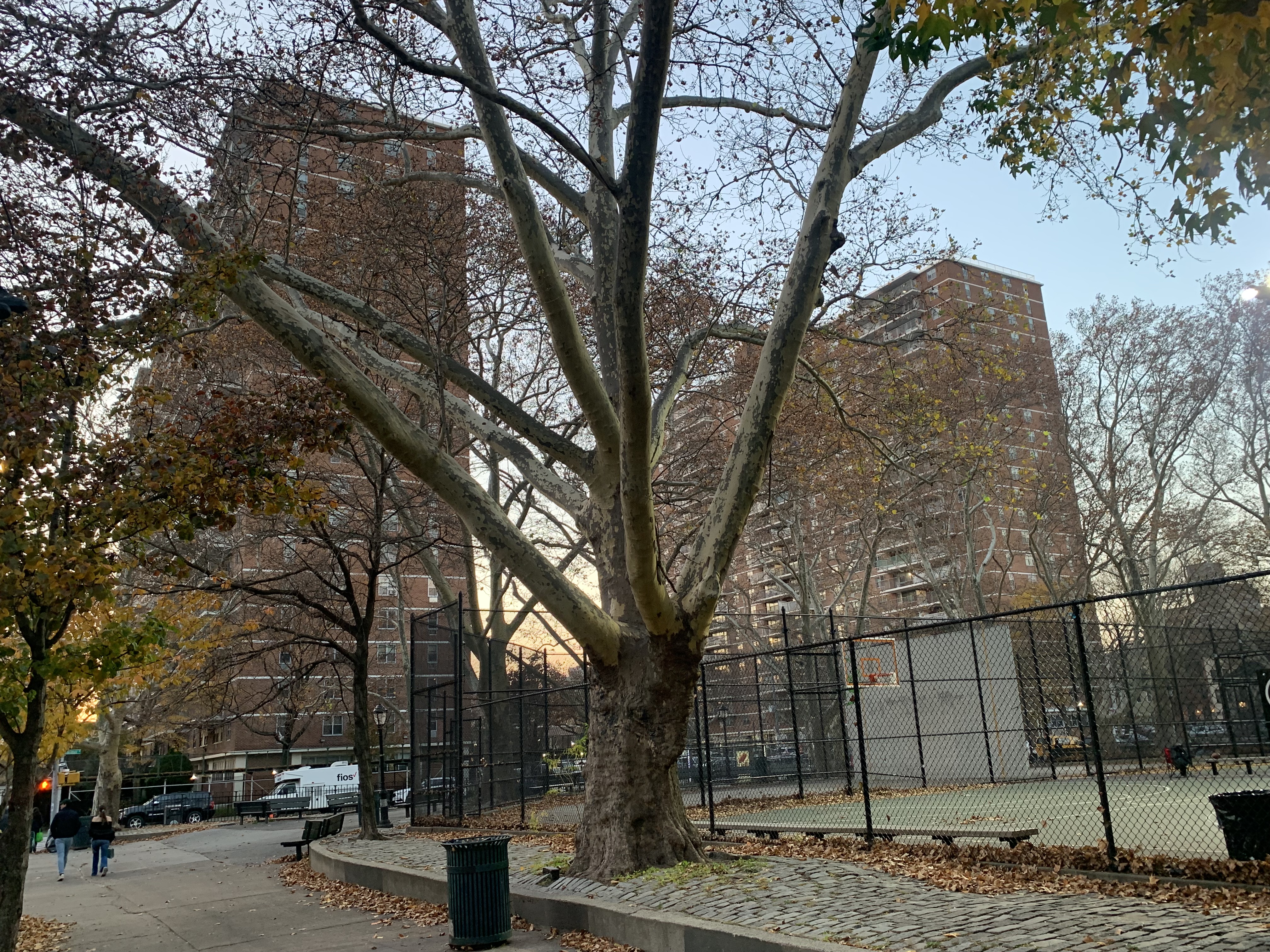Reflection #3

Linday Park: A Ripple in Space-Time
There is a distinct shift you feel when you approach Lindsay Park from the South. As you head north, you leave behind the gridlocked traffic that frequently snarls Broadway. You head north away from the J/M/Z subway line that rumbles above ground as it straddles Broadway. As the cacophony of Broadway fades, the large towers cast shadows and the noise begins to fade.
As I’ve mentioned before, the design choices of Lindsay Park are distinct. This project was developed and constructed in the 1960s and it is obvious. The parking lots, landscaping, and parallelograms of the towers themselves exude a tabula rasa ethos of ordered rebirth. Lindsay Park was not always here. What once preceded it was deemed “urban blight” and demolished for the subsidized middle income housing afforded by the Mitchell-Lama housing program.
The size of the development is big. It is not the tight, crammed housing that makes up the other residential sections of Williamsburg south and east of the BQE. It also holds a different feeling than the public housing, Borinquen Plaza, that is adjacent to it, just on the other side of Manhattan Avenue. Lindsay Park is neither new luxury apartments nor is it the old housing stock of Williamsburg. Instead it exists as a ‘what-if’ for housing, an anomaly in the fastest growing community board area in all of New York between 2010 and 2020. It is not without its faults, the co-op board has been accused of misusing funds, but affordable and quality housing is what New York City needs. For all its flaws, parking and corruption included, Lindsay Park offers New Yorkers an affordable place to lay their heads at night.